The Consistent Golf Swing Plane
A big tennant of the one plane golf swing is to return the golf club back to the same position it was at (in terms of the shaft plane line) at address. That’s what Moe Norman and Ben Hogan did.
But let’s see how the top golfers in the world today fear as far that is concerned.
Pictures of the top ten golfers as at August 2012 are below with their setup positions, compared to their impact positions.
1. Luke Donald
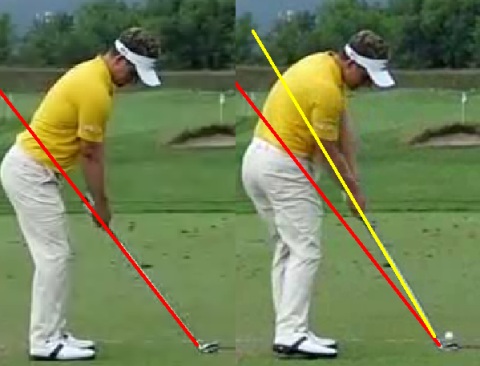
2. Tiger Woods
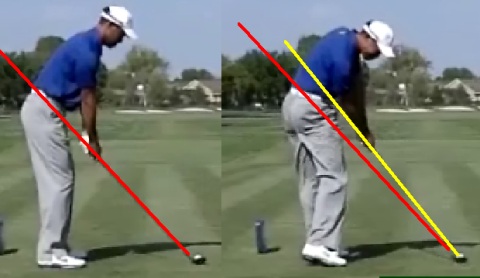
3. Rory McIlroy
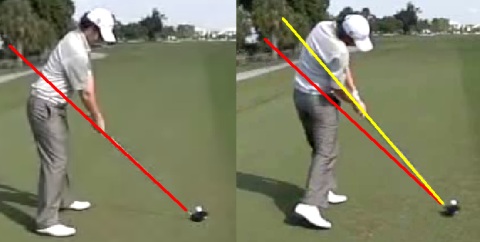
4. Lee Westwood
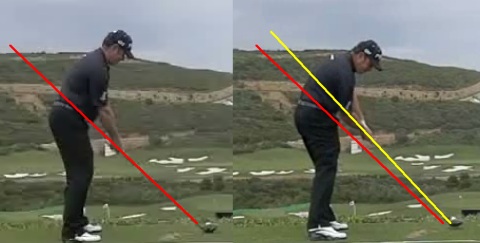
5. Webb Simpson
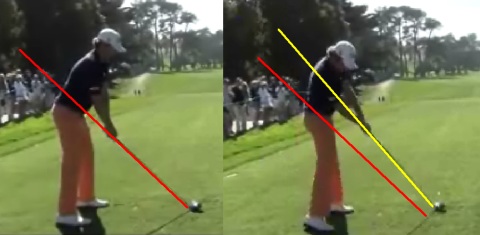
6. Adam Scott
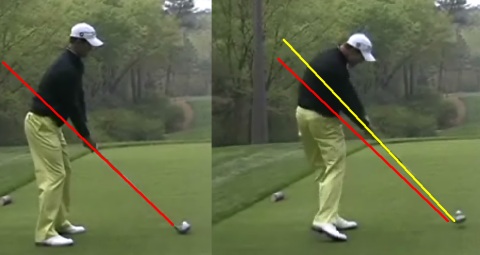
7. Bubba Watson
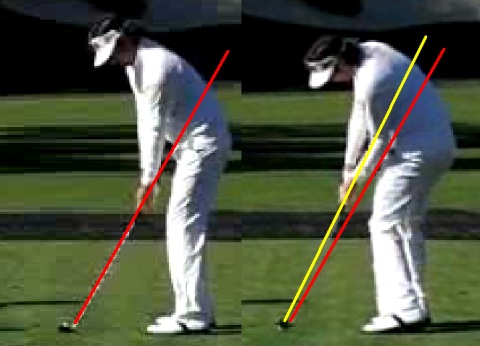
8. Jason Duffner
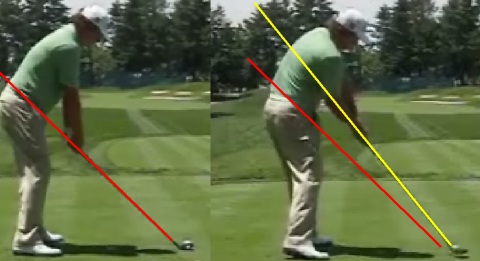
9. Matt Kucher
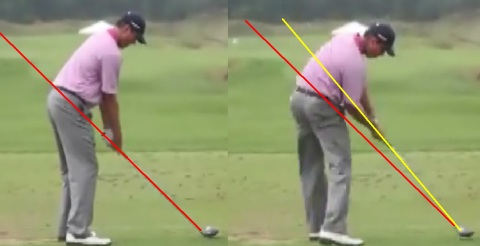
10. Justin Rose
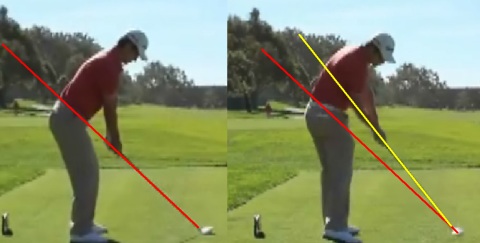
So 10 of the top 10 golfers in the world DO NOT return the clubface to the same plane line that they started at at address.
Why did I show you that?
BecauseI believe the plane line should be more vertical than a one plane swing, and not as vertical as a two plane swing. Somewhere in the middle. A great model I’m going to show you in a minute for this, is Louis Oosthuizen.
But these impact pictures begs the question… are they trying to do that?
The answer is no!
Because it’s been proven that the golf swing is moving way too fast at impact to consciously do anything. So what is happening at impact is this…
The forces are so great at impact that the hands are being pulled up. That’s just a natural occurrence of the modern, powerful golf swing.
So that got me thinking how it would be good to swing on a plane that is similar to what happens at impact. Because you can talk all you want about one plane and two plane swings (in terms of the backswing and shoulder plane, left arm angle etc.). But at the end of the day, it’s what happens at impact that matters.
So my Consistent Golf Swing Plane theory, is to swing back so that at the half-way point in the golf swing the club shaft points down at the ball. Then at the half-way point in the downswing, the clubshaft again points at the ball. I’m now going to show you this theory in action in one of the best swings on the planet.
Louis Oosthuizen is the 2010 Open Champion and has a golf swing that many believe is one of the best among professional golfers. So let’s put my swing plane theory to the test, and I’m going to draw a line through his setup at address right through the middle of his back.
Setup
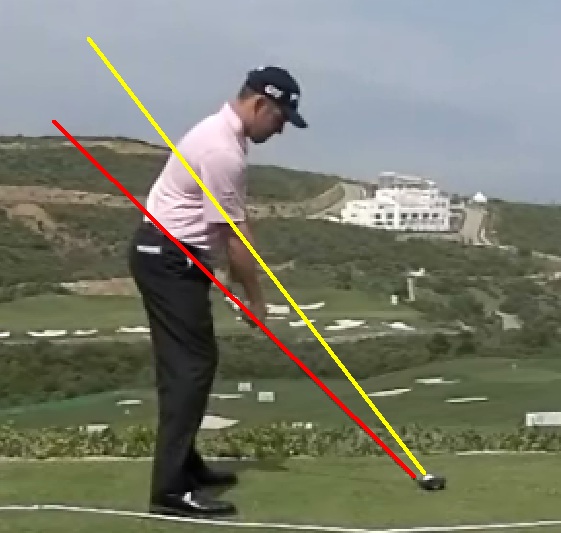
Half-Way
Back
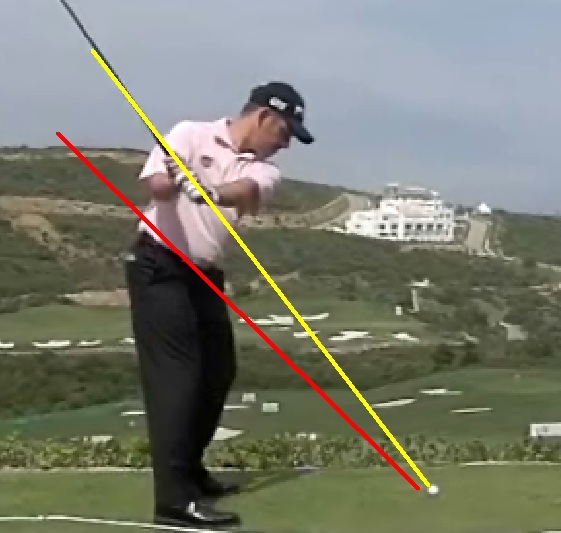
Half-Way
Down
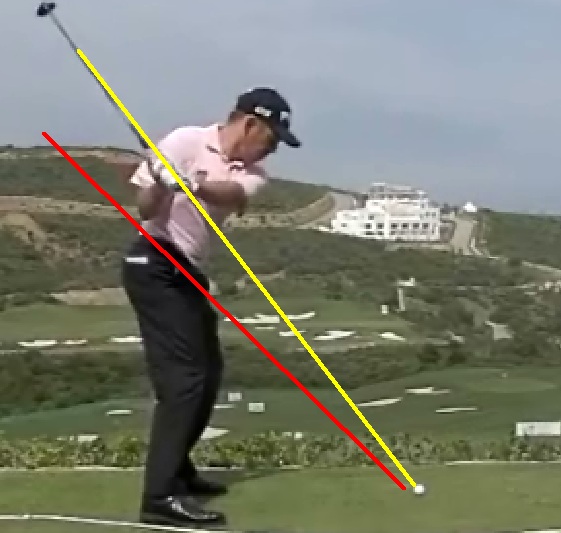
Impact
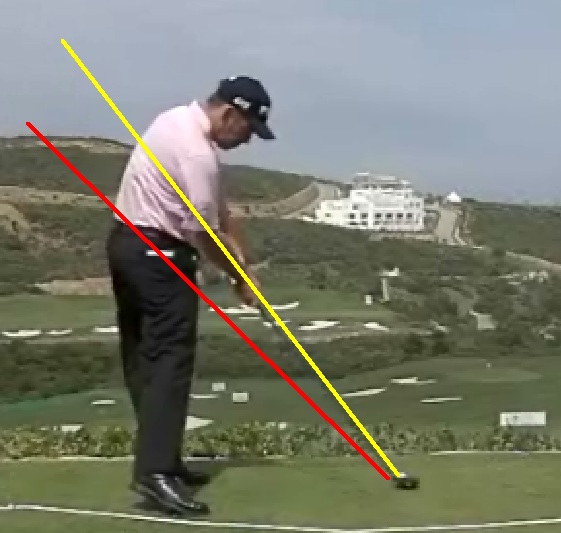
Follow-Through
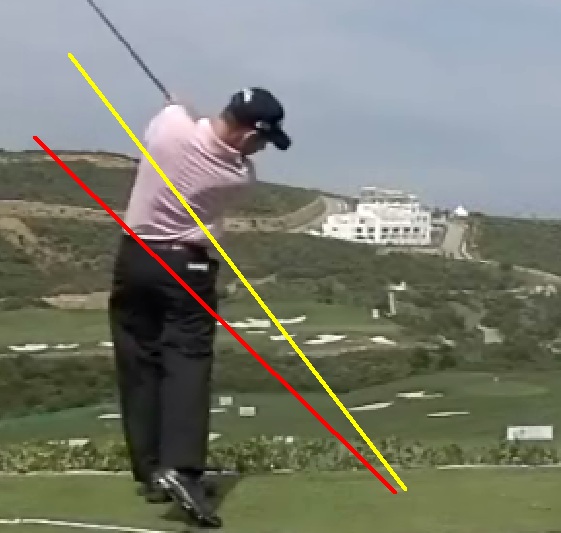
Pretty damn good swing, with a very consistent swing plane!
If you read this post I said a way to see if a person swings on a one plane swing, is to measure at the top of their swing the angle of the left arm and the shoulders. And if there’s less than 12 degrees difference then they have a one plane swing. Let’s see what the difference is for Louis:
Louis Oosthuizen – 22 Degrees Difference
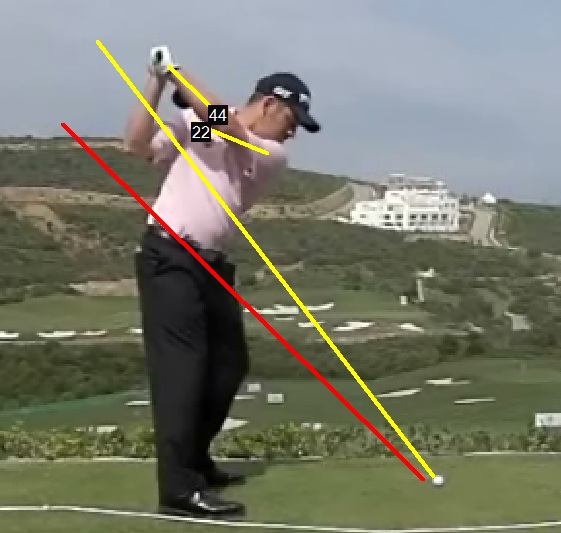
Compare that to Moe Norman and Jim Furyk. Extremes of a one plane and two plane swing:
Moe Norman (One Plane Swinger) – 0 Degrees Difference
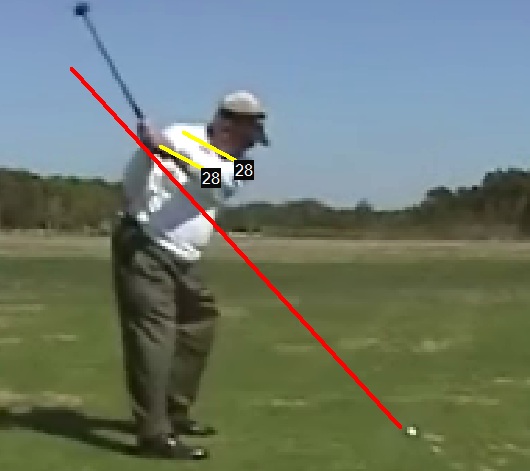
Jim
Furyk (Two Plane Swinger) – 48 Degrees Difference
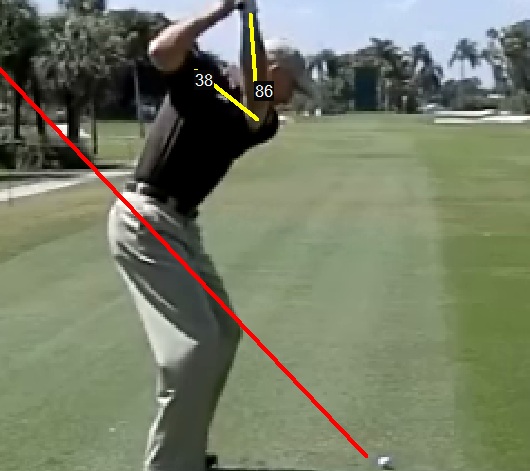
And if you split the difference between those extremes you get 24 degrees. Louis Oosthuizen at 22 Degrees Difference is almost bang in the middle.
And this swing plane that Louis uses is what I term “the Consistent Golf Swing Plane”. I have a program you can see here in which I teach you how to groove a Consistent Golf Swing
Plane.
Having a consistent golf swing plane will help you to hit straighter, longer and more consistent golf shots. So if you lack consistency in your ball striking, working on making your golf swing plane more consistent can only aid you in improving your ball striking consistency.
Anyway, I hope this series I’ve given you on the swing plane has clarified a lot of issues you had with understanding the swing plane. And I hope that now you have a very clear idea on what swing plane you should be swinging back, down and through on.
